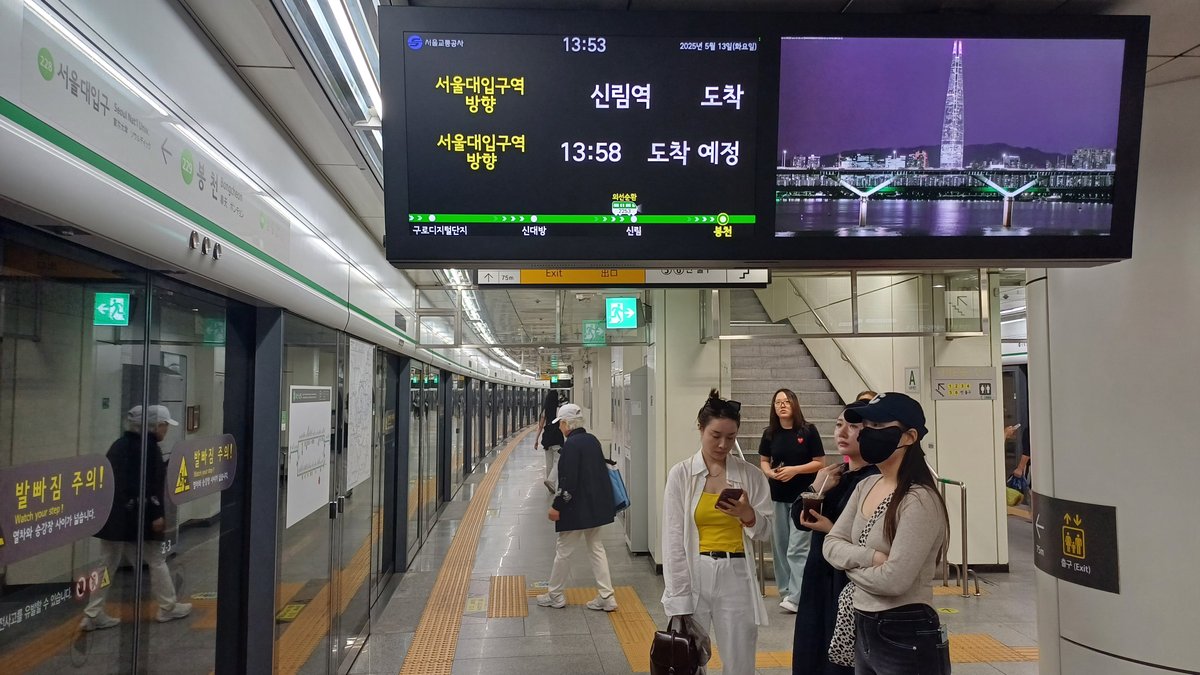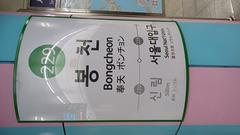
Bongcheon Station Visiting Guide: Seoul, South Korea – History, Tickets, Tips, and Attractions
Date: 14/06/2025
Introduction
Nestled in Seoul’s dynamic Gwanak District, Bongcheon Station (봉천역) is far more than just a subway stop on Line 2—it’s a gateway to a vibrant blend of history, academia, and natural beauty. Since its opening in 1984, Bongcheon Station has connected locals, students, and travelers to a neighborhood shaped by the growth of Seoul National University, bustling markets, and the scenic trails of Gwanak Mountain. This guide details everything you need to plan a visit: from operating hours and ticketing, to accessibility, cultural highlights, and nearby attractions. Whether you’re a student, hiker, or cultural explorer, Bongcheon Station is your entry point to one of Seoul’s most intriguing districts. For more on Seoul’s urban transit and development, see Open Korea and the official Seoul Metro website.
Table of Contents
- Introduction
- Historical Context
- Visiting Hours & Tickets
- Station Features & Accessibility
- The Neighborhood: Culture & Social Life
- Top Nearby Attractions
- How to Get Around
- Unique Experiences & Highlights
- FAQs
- Conclusion
- References
Historical Context of Bongcheon and Its Urban Evolution
“Bongcheon” translates to “Phoenix Heaven,” reflecting its auspicious roots in the Gwanak District. Once a rural periphery, the area transformed alongside the establishment of Seoul National University in the 1970s. The 1984 opening of Bongcheon Station on Line 2’s Circle Line was pivotal, linking this neighborhood with central Seoul and spurring urban growth. Today, Bongcheon is a thriving academic and residential hub, blending tradition with innovation (Open Korea).
Visiting Hours & Ticket Information
- Operating Hours: Daily, roughly 5:30 AM – midnight. Train intervals are shorter during peak times (ExploreMetro).
- Ticketing: Purchase single-ride tickets at kiosks or opt for a T-money card for seamless use across subway and bus lines. Fares start at approximately 1,250–1,350 KRW, depending on distance. There are no special surcharges at Bongcheon Station.
- How to Buy: Use multilingual automated machines or mobile apps linked to Seoul Metro; T-money cards are recommended for convenience.
Station Features & Accessibility
Bongcheon Station is built for efficiency and inclusivity:
- Signage: Bilingual (Korean & English) for easy navigation (Wikivoyage).
- Layout: Underground, with multiple exits connecting to markets, residential zones, and bus stops.
- Facilities: Elevators, escalators, tactile paving, accessible restrooms, convenience stores, bakeries, ATMs, baby-changing stations, and drinking fountains.
- Safety: CCTV, emergency call buttons, and attentive staff ensure a secure environment.
The Neighborhood: Culture & Social Life
The area around Bongcheon Station is a lively mix of old and new Seoul. Bongcheon Market offers fresh local produce and authentic street food. The proximity to Seoul National University infuses the district with a youthful, intellectual energy, evident in the many cafes, bookstores, and cultural venues. Local festivals and university events showcase both Korea’s traditions and its contemporary dynamism (Open Korea).
Top Nearby Attractions
Seoul National University
A short bus or taxi ride from the station, SNU’s campus features striking architecture, lush green spaces, and cultural gems such as the Museum of Art and Kyujanggak, a historic royal library.
Bongcheon Market
Located near the station, this bustling market is a great place to sample Korean street food and experience daily local life.
Gwanak Mountain
Accessible by local buses or on foot from Exit 2, Gwanak Mountain is a top hiking spot with panoramic views of Seoul (Mapcarta).
How to Get Around
- Subway: Line 2 provides direct access to major Seoul districts like Gangnam, Hongdae, and Dongdaemun.
- Bus: Numerous routes connect to central Seoul and neighboring districts.
- Night Transport: While subways stop around midnight, night buses continue to operate (Wikivoyage).
- Taxi/Rideshare: Taxi stands are near Exits 1 and 4; English-language taxi apps are supported.
- Bicycle: Seoul Bike “Ddareungi” stations are nearby (Seoul Bike “Ddareungi”).
Unique Experiences & Highlights
- Photogenic Spots: Urban architecture and traditional markets create great photo opportunities.
- Guided Tours: Check with the university and local cultural centers for occasional tours, exhibitions, and performances.
- Local Dining: Enjoy budget-friendly, authentic Korean dishes in nearby eateries (kimchi jjigae, bibimbap, tteokbokki).
- Nature Escapes: Trekking Gwanak Mountain is especially rewarding in spring or autumn.
Practical Tips
- Avoid Rush Hours: Morning (7–9 AM) and evening (5–7:30 PM) are busiest due to commuters and students.
- Language: English signage is common, but translation apps like Papago or Google Translate are helpful (Hey Roseanne).
- Connectivity: Free Wi-Fi, good mobile coverage, and nearby ATM access.
- Payments: Credit cards are widely accepted, but cash is preferred at small local shops.
- Luggage Storage: Limited at the station; plan accordingly.
- Safety: Seoul is very safe, but standard precautions apply.
Frequently Asked Questions (FAQ)
Q: What are Bongcheon Station’s operating hours?
A: Approximately 5:30 AM to midnight daily.
Q: Are there special ticket fees?
A: No—standard Seoul Metro fares apply.
Q: Is the station accessible for disabled travelers?
A: Yes, with elevators, escalators, and tactile paving.
Q: Which exit is best for Gwanak Mountain?
A: Exit 2 leads directly to trailheads.
Q: How to reach Seoul National University?
A: Take a short bus or taxi ride from the station, or walk if you prefer.
Q: Are there local festivals or events?
A: Yes, especially those affiliated with SNU or local markets.
Conclusion
Bongcheon Station exemplifies Seoul’s blend of modern convenience, academic vibrancy, and natural beauty. Whether you’re hiking Gwanak Mountain, visiting SNU’s cultural treasures, or eating your way through Bongcheon Market, this hub offers both seamless connectivity and a true taste of local life. For real-time transit updates and more travel tips, download the Audiala app and follow local guides. Make Bongcheon Station your starting point for an unforgettable Seoul adventure.
For official details and event schedules, refer to Seoul Metro, SNU Museum of Art, and Kyujanggak.
References
- Bongcheon Station: Visiting Hours, Tickets, and Exploring Seoul’s Historical and Cultural Hub, 2025, Open Korea (Open Korea)
- Bongcheon Station Visitor Guide, 2025, Travel Stained (Travel Stained)
- Bongcheon Station: A Transit Hub in Seoul – Visitor Guide and Travel Tips, 2025, Wikivoyage (Wikivoyage)
- Visiting Bongcheon-dong: A Guide to Seoul’s Cultural and Historical Gem, 2025, Wikipedia (Wikipedia)
- Official Seoul Metro Website, 2025 (Seoul Metro)
- Seoul National University Museum of Art, 2025 (SNU Museum of Art)
- Kyujanggak, Seoul National University, 2025 (Kyujanggak)
- Seoul Bike “Ddareungi” (Seoul Bike “Ddareungi”)
- ExploreMetro (ExploreMetro)
- Namu Wiki (Namu Wiki)
- Hey Roseanne (Hey Roseanne)
- Mapcarta (Mapcarta)
- Horror Chronicles (Horror Chronicles)
- Prepare Travel Plans (Prepare Travel Plans)
- The Broke Backpacker (The Broke Backpacker)













































































































































































































